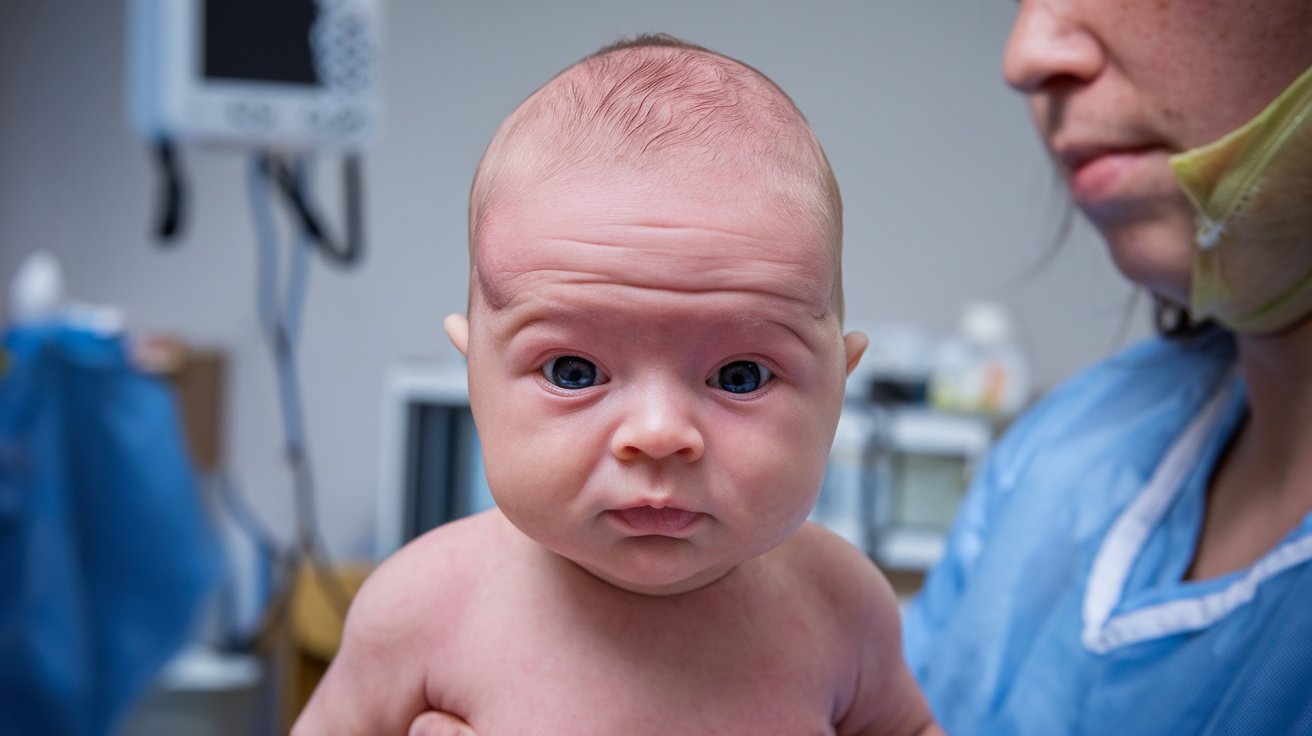
Congenital Craniosynostosis is a condition where a baby's skull bones fuse too early, causing problems with skull and brain growth. Maternal Hyperthyroiditis refers to an overactive thyroid in pregnant women, which can affect both mother and baby. But how are these two conditions connected? Research suggests that maternal hyperthyroiditis might increase the risk of congenital craniosynostosis in newborns. Understanding this link is crucial for expecting mothers and healthcare providers. This blog post will explore 25 key facts about these conditions, their connection, and what expecting mothers should know. Stay informed to ensure the best outcomes for both mother and child.
Key Takeaways:
- Congenital craniosynostosis affects 1 in 2,000 babies and early diagnosis is crucial for better treatment outcomes. Understanding the different types and the need for early intervention is important for new parents.
- Maternal hyperthyroiditis, though rare, can have significant effects on both mother and baby. It's important to manage thyroid levels during pregnancy to prevent complications and ensure healthy development.
Understanding Congenital Craniosynostosis
Congenital craniosynostosis is a condition where a baby's skull bones fuse prematurely. This can affect brain and skull growth, leading to various complications. Here are some key facts about this condition.
-
Craniosynostosis affects 1 in 2,000 live births. This makes it a relatively rare condition but still significant enough to be a concern for new parents.
-
There are different types of craniosynostosis. These include sagittal, coronal, metopic, and lambdoid, each affecting different sutures in the skull.
-
Sagittal craniosynostosis is the most common type. It accounts for about 50-60% of all cases.
-
Craniosynostosis can be syndromic or non-syndromic. Syndromic cases are associated with genetic syndromes, while non-syndromic cases occur without any other abnormalities.
-
Early diagnosis is crucial. Detecting the condition early can lead to better treatment outcomes.
Maternal Hyperthyroiditis and Its Impact
Maternal hyperthyroiditis, a condition where the mother has an overactive thyroid during pregnancy, can have significant effects on both mother and baby. Here are some important facts.
-
Hyperthyroiditis affects about 0.1-0.4% of pregnancies. Though rare, it requires careful management.
-
Graves' disease is the most common cause of hyperthyroiditis in pregnancy. This autoimmune disorder leads to overproduction of thyroid hormones.
-
Untreated hyperthyroiditis can lead to complications. These include preterm birth, low birth weight, and preeclampsia.
-
Thyroid hormones are crucial for fetal development. They play a significant role in brain and nervous system development.
-
Maternal hyperthyroiditis can affect the baby's thyroid function. This can lead to neonatal hyperthyroidism, which requires immediate treatment.
Connection Between Craniosynostosis and Maternal Hyperthyroiditis
Understanding the link between congenital craniosynostosis and maternal hyperthyroiditis can help in better management and prevention strategies. Here are some facts that highlight this connection.
-
Maternal hyperthyroiditis can increase the risk of craniosynostosis. Studies suggest a higher incidence of craniosynostosis in babies born to mothers with hyperthyroiditis.
-
Thyroid hormones influence bone development. Excessive thyroid hormones can disrupt normal bone growth and fusion.
-
Early prenatal care is essential. Monitoring thyroid levels and managing hyperthyroiditis can reduce the risk of craniosynostosis.
-
Genetic factors also play a role. Both conditions can have genetic components, making family history an important factor.
-
Environmental factors may contribute. Exposure to certain environmental toxins can exacerbate both conditions.
Treatment and Management
Managing both congenital craniosynostosis and maternal hyperthyroiditis requires a multidisciplinary approach. Here are some key points about treatment and management.
-
Surgery is the primary treatment for craniosynostosis. It helps to correct the shape of the skull and allow for normal brain growth.
-
Timing of surgery is crucial. Early intervention, usually before one year of age, leads to better outcomes.
-
Thyroid function must be monitored during pregnancy. Regular check-ups can help manage hyperthyroiditis effectively.
-
Medications can help manage hyperthyroiditis. Antithyroid drugs are commonly used to control thyroid hormone levels.
-
Postnatal care is important. Babies born to mothers with hyperthyroiditis should be monitored for thyroid function and cranial development.
Long-term Outlook
The long-term outlook for children with craniosynostosis and those born to mothers with hyperthyroiditis can vary. Here are some facts about what to expect.
-
Most children with craniosynostosis lead normal lives. With early treatment, many children do not experience long-term complications.
-
Regular follow-ups are necessary. Monitoring growth and development ensures any issues are addressed promptly.
-
Maternal hyperthyroiditis can be managed effectively. With proper treatment, most women have healthy pregnancies and babies.
-
Genetic counseling can be beneficial. For families with a history of either condition, genetic counseling can provide valuable insights.
-
Research is ongoing. Scientists continue to study these conditions to improve treatment and prevention strategies.
Final Thoughts on Congenital Craniosynostosis and Maternal Hyperthyroiditis
Understanding congenital craniosynostosis and maternal hyperthyroiditis is crucial for expecting parents. These conditions can significantly impact a child's development. Early diagnosis and treatment make a huge difference. Craniosynostosis involves the premature fusion of skull bones, leading to potential brain growth issues. Maternal hyperthyroiditis can affect both mother and baby, causing complications during pregnancy.
Parents should stay informed and consult healthcare providers regularly. Awareness and proactive measures can lead to better outcomes. Remember, knowledge is power. By staying educated, parents can navigate these challenges more effectively. Always seek professional advice if you suspect any symptoms. Early intervention is key to managing these conditions successfully. Stay vigilant, stay informed, and prioritize health for both mother and child.
Frequently Asked Questions
Was this page helpful?
Our commitment to delivering trustworthy and engaging content is at the heart of what we do. Each fact on our site is contributed by real users like you, bringing a wealth of diverse insights and information. To ensure the highest standards of accuracy and reliability, our dedicated editors meticulously review each submission. This process guarantees that the facts we share are not only fascinating but also credible. Trust in our commitment to quality and authenticity as you explore and learn with us.


